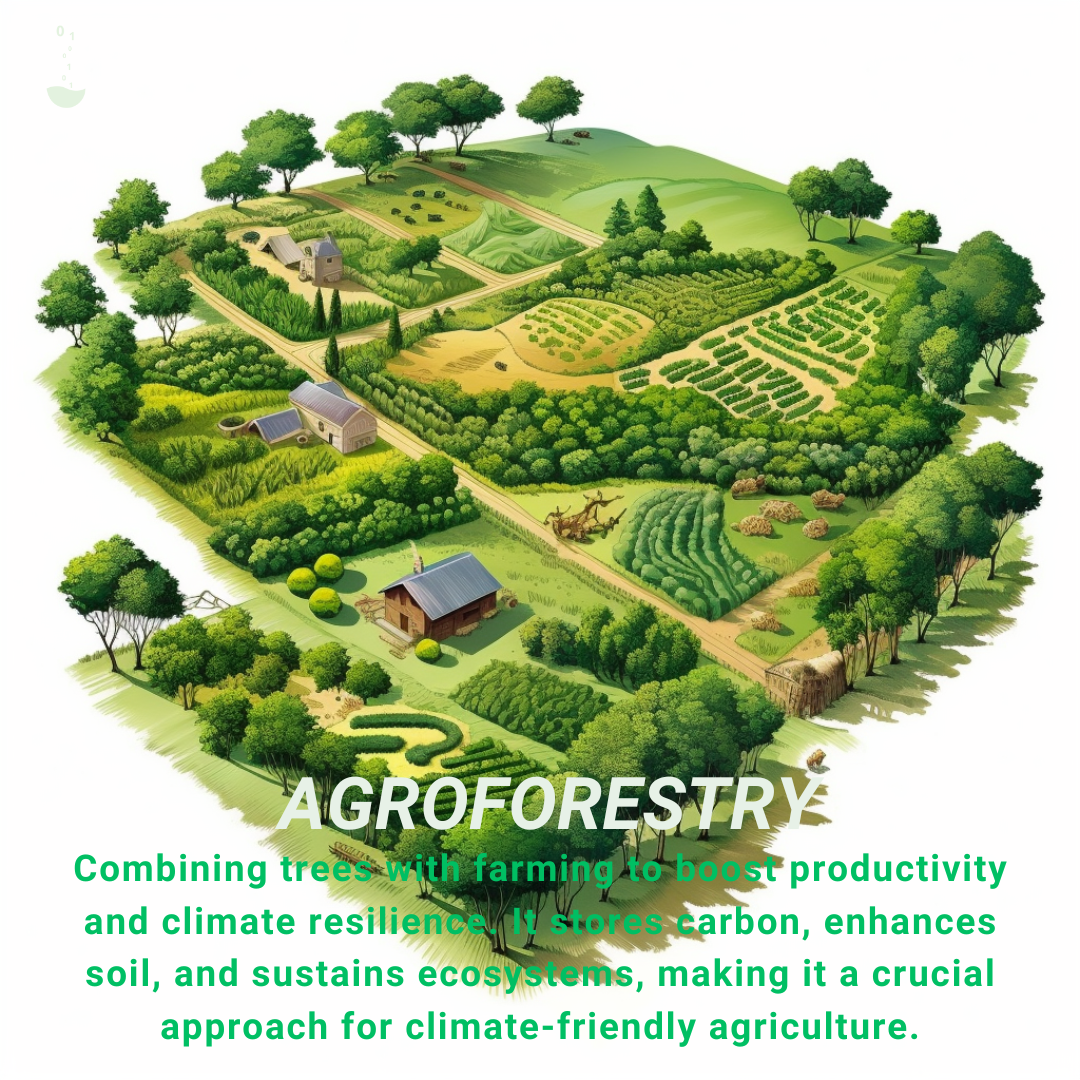October 20, 2023
Climate Change Poster Collection of the Day – Agroforestry
Book a Demo
Today’s Climate Change Poster Collection focuses on Agroforestry, a practice involving the strategic integration of trees or shrubs with crops and/or livestock, is emerging as a promising climate change adaptation strategy. This innovative approach not only boosts farmers’ resilience but also offers an array of biophysical and socioeconomic benefits.
Biophysical modeling of agroforestry reveals its potent potential in shielding crops from climate extremes. It does so by creating microclimates, reducing transpiration rates, and minimizing soil loss. Moreover, it acts as a buffer, safeguarding crops from storms. Such a protective layer is crucial in the wake of an increasing number of extreme weather events triggered by climate change.
The socioeconomic benefits of agroforestry are equally impressive. It serves as a tool for diversifying income sources, thereby reducing vulnerability. Furthermore, it provides farmers with a means to manage risk and uncertainty, offering financial security in times of need. This is particularly beneficial for farmers who often face the brunt of climate change impacts.
Despite the immense potential of agroforestry, there are significant knowledge gaps that need to be filled. The uneven distribution of research, inadequate understanding of benefits, and lack of integrated research are some of the hurdles in unlocking the full potential of agroforestry in climate change adaptation.
The relevance of agroforestry in the context of climate change policy is gradually gaining recognition. Reports and processes from influential bodies such as the Intergovernmental Panel on Climate Change and the United Nations Framework Convention on Climate Change are increasingly acknowledging the importance of agroforestry.
Agroforestry is a water-wise land management system that offers multiple benefits. These range from climate change mitigation, adaptation to extreme weather, to offering solutions to the challenges faced by smallholder farmers.
Agroforestry also plays a crucial role in supporting ecosystem services. It aids in regulating water and sediment flows, carbon and nutrient cycling in soils. This, in turn, contributes to increased soil fertility, reduced soil erosion, and control of floods and pests.
Smallholder farmers stand to benefit immensely from agroforestry. This practice can lead to increased farm productivity, diversified produce, and reduced dependence on conventional fertilizers and chemicals. Consequently, it can lead to a substantial increase in income for farmers. In conclusion, agroforestry is a promising and practical solution to the pressing issue of climate change and its impact on agriculture.
Discover an inspiring collection of climate change poster.



